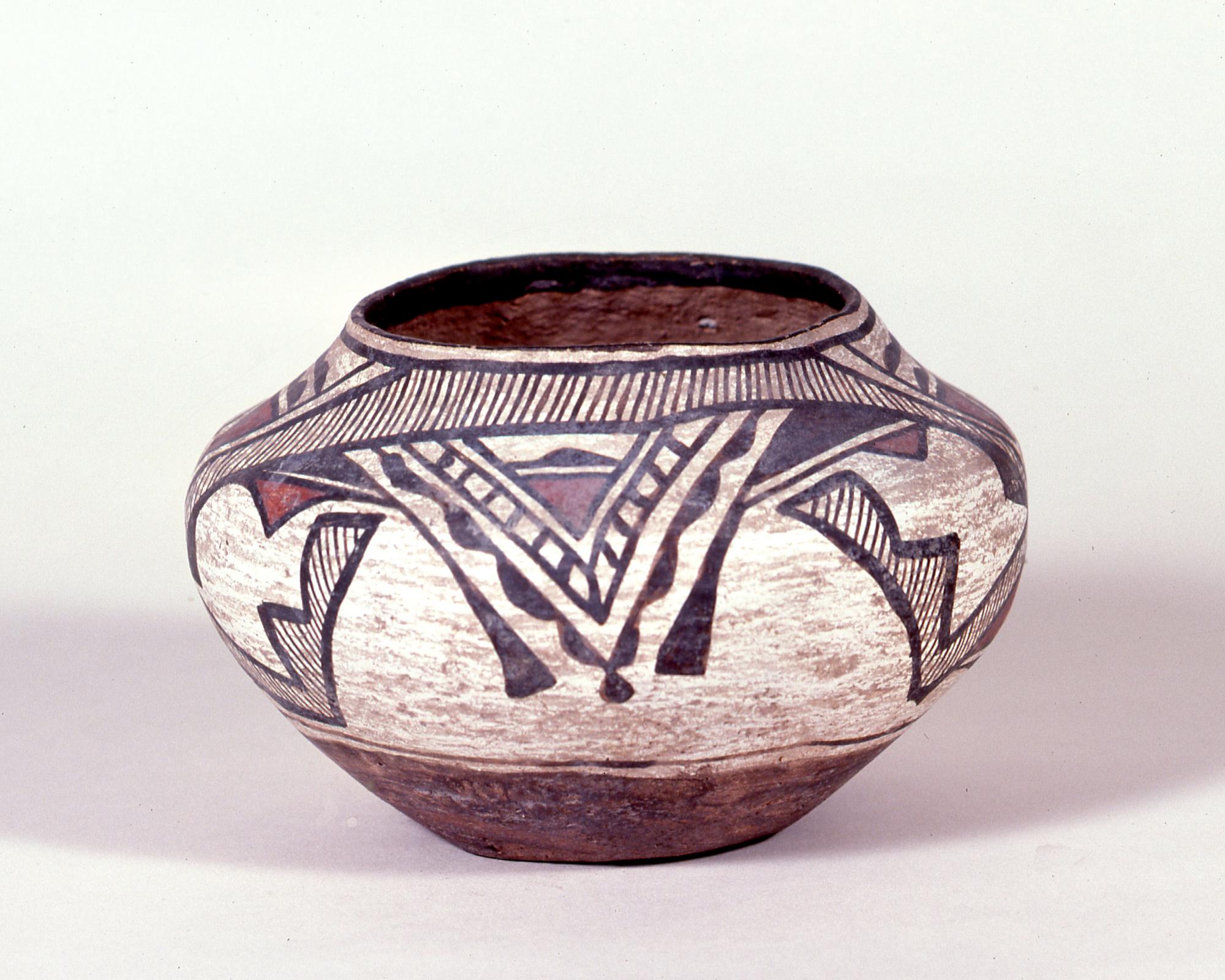
Photograph by Addison Doty. Copyright 2010 School for Advanced Research.
Jar | K'yabokya
Date: c. 1900
Artist or Maker: Unknown
Dimensions:
Dimensions: 22.7 × 19.1 cm (8 15/16 × 7 1/2 in.)
Weight: 0.8 kg (1.75 lb.)
Medium: clay | paints
Credit Line: Gift of the Indian Art Education Fund.
Place Made:
Zuni Pueblo, McKinley County, New Mexico, Southwest, United States, North America
Object Number: IAF.250
Not on view
Tribal Collection Review RemarksJim Enote and Octavius Seowtewa during collection review visit February 17 and 18, 2010 (Events Record “Collection Review: Zuni Tribe, Review 4”): This jar is decorated with the design of birds or bats hanging upside down. It's small size indicates that it was likely made for sale and not for personal, household, or ceremonial use in the community.
Except for the four IARC bird/bat design jars (IAF.248, SAR.1987-1-30, SAR.1978-1-145, and this jar), Mr. Seowtewa has only seen one other jar with this design, in a collection at either the Denver Art Museum or at Mesa Verde. The Zuni word for “bat” is ah-sho-tse. Stories featuring bats are only told during the winter at Zuni. Zuni children are told that snakes, which are summer animals, will come bite them if they tell stories, like bat, owl, or raven stories, at the wrong time of year.
The word for a water jar in Zuni is “k'yabokya de'ele,” which translates to “water container vessel” in English. The intended use for these jars was to store and carry water, but they could also be used to store other items.
In Collection(s)
The Indian Arts Research Center, in collaboration with Native American community scholars, strives to present accurate collections records. Records may be updated as new information becomes available and is reviewed with the Native American community having cultural affinity to particular items. Please write to iarc@sarsf.org if you have questions or concerns related to the documentation.


